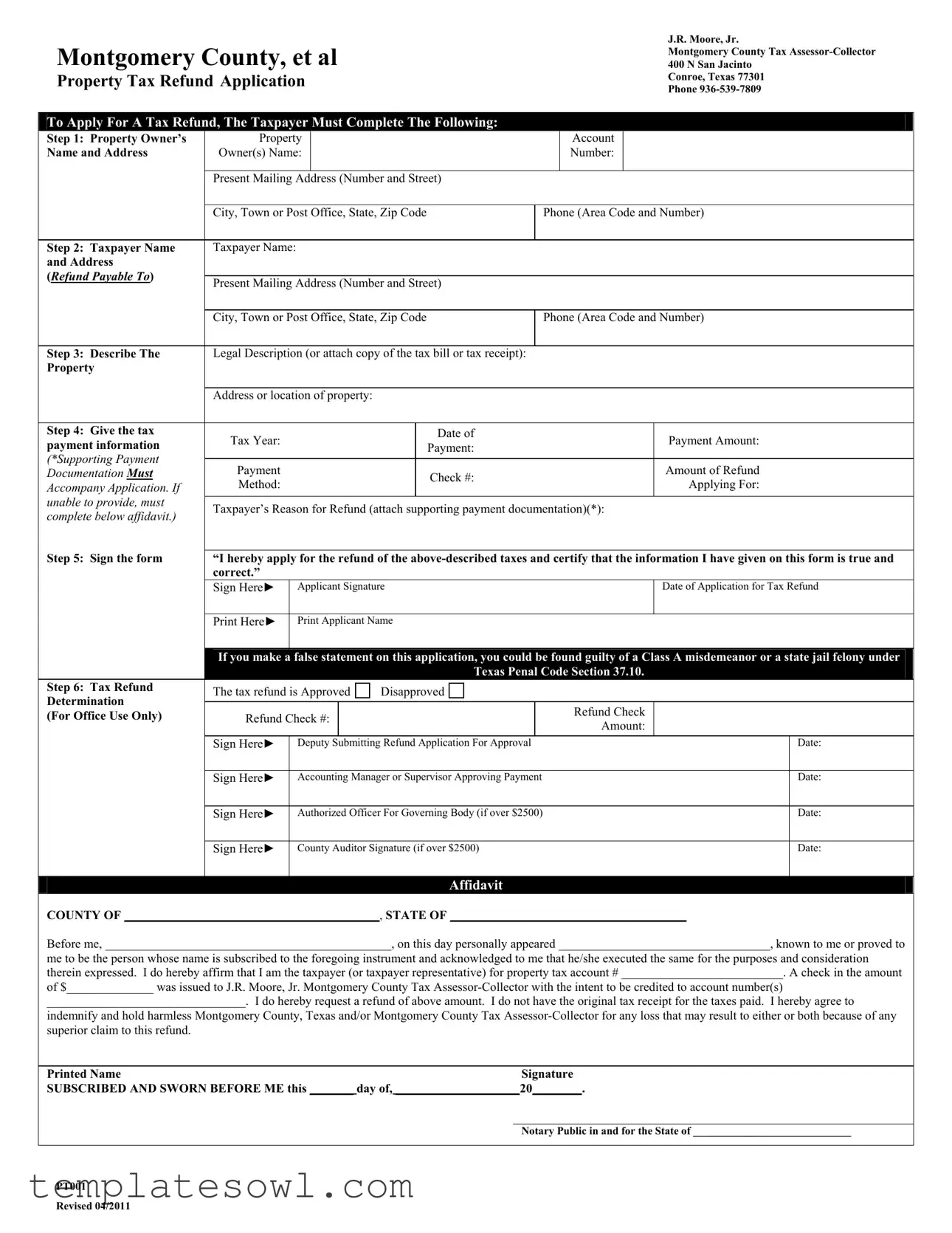What is the PT001 form?
The PT001 form is the Property Tax Refund Application specific to Montgomery County, Texas. It is designed for property owners who seek to reclaim taxes that have been overpaid or for various reasons where a refund is justified. By completing this form, taxpayers can submit requests to the Montgomery County Tax Assessor-Collector, ensuring their claims are officially documented and processed.
How do I fill out the PT001 form?
To fill out the PT001 form, follow a series of clearly defined steps. Begin with providing your property account name and address, including your present mailing information. Next, input the taxpayer name and the address to which the refund should be sent. Describe the legal description of the property clearly or attach a copy of the relevant tax documentation. You must then indicate the tax year, payment date, amount paid, and the method of payment. Lastly, ensure the form is signed and dated to certify the accuracy of the information provided.
What information do I need to provide about the property?
You will need to provide the legal description of the property as well as its physical address. This helps identify the property for which you are seeking a tax refund. If you have a tax bill or receipt, attaching a copy will strengthen your application.
Is supporting documentation required?
Yes, supporting documentation is necessary when applying for a refund. This may include copies of payment receipts or any other relevant documents that substantiate your claim. If you cannot provide original documentation, you may need to complete an affidavit explaining the circumstances.
What should I do if I do not have the original tax receipt?
If you do not have the original tax receipt, your option is to complete the affidavit portion of the PT001 form, which provides a statement affirming your identity as the taxpayer. You will agree to hold Montgomery County harmless regarding any claim to the refund. It is crucial to be truthful and thorough in your affidavit to avoid potential legal issues.
What happens after I submit the PT001 form?
Once you have submitted the PT001 form, it will undergo processing by the Tax Assessor-Collector’s office. The refund request will be reviewed, and you will receive notification regarding the status of your application. Should the request be approved, you will be issued a refund check, with details recorded in the office's system.
Are there any penalties for providing false information?
Providing false information on the PT001 form can lead to significant consequences. Under Texas law, it may be classified as a Class A misdemeanor or a state jail felony. It is essential to ensure that all information provided is accurate and honest to avoid any legal repercussions.
Who can assist me if I have questions about the PT001 form?
If you have questions or need assistance while filling out the PT001 form, you can contact the Montgomery County Tax Assessor-Collector’s office directly. They can provide guidance and support on any aspect of the application process. Their contact number is 936-539-7809, and they are there to help ensure your application is completed correctly.

